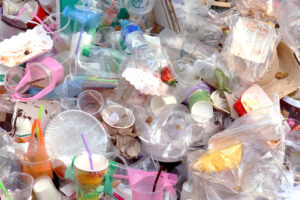The Biden-Harris administration recently announced a new strategy to tackle plastic pollution called ”Mobilizing Federal Action on Plastic Pollution: Progress, Principles, and Priorities.”
According to the White House Fact Sheet about the strategy, this action marks the first time the federal government has formally acknowledged the severity of U.S. plastic pollution and the scale of the response necessary to effectively confront the issue.
“In particular, the report reaches two key topline findings:
- Successfully combatting plastic pollution requires the United States to take a comprehensive approach that addresses the impacts of plastic throughout the entire lifecycle – from production to end of life; and
- The scope, scale, and complexity of plastic pollution requires coordinated action from all levels of government.”
The strategy is divided into three components:
- Progress to date, which includes addressing the issue from the beginning of its life cycle, marine cleanup efforts, “infrastructure investment, catalyzing the clean energy industry and federal sustainability, and the Reduction of Single-Use Plastic Packaging Rule,” according to law firm Holland & Knight LLP.
- Five guiding principles:
- Assessing and Reducing Pollution from Plastic Production
- Innovating Materials and Product Design
- Decreasing Plastic Waste Generation
- Improving Environmentally Sound Waste Management
- Informing and Conducting Capture and Removal of Plastic Pollution
- Priority “federal actions to address problems during the life cycle of plastics, including during production, product design, waste generation and waste management, as well as with respect to pollution.”
The cornerstone of the plan is to address the issue of single-use plastics by phasing out “purchases of single-use plastics for food, events and packaging by 2027,” according to The New York Times. “By 2035, it will banish single-use plastics from all government operations.”
Some of these changes will be easy to accomplish by eliminating single-use water bottles in favor of refillable water stations and switching to recyclable printer cartridges.
However, some changes will be more challenging.
“Other reductions could be more difficult to achieve, particularly if they involve single-use plastics for, say, emergency medical use or for materials designed for combat settings, where speed and efficiency are important considerations,” The New York Times notes.
Some sources say the plan isn’t enough and that it doesn’t act quickly enough.
“The plan unveiled today by the [U.S.] fails to take the necessary step to meaningfully address the toxic global plastic crisis crippling the planet: production reduction,” said environmental justice organization Fenceline Watch’s Shiv Srivastava, policy director, and Yvette Arellano, founder/executive director, according to the Plastic Pollution Coalition. “This plan boils down to federal procurement policy. The [U.S.] could seize the opportunity to be a leader in reducing the production of plastic rather than a plan lacking ambition, depth, or the vision necessary to protect environmental justice communities in the U.S. and vulnerable communities worldwide.”
Others expressed optimism.
“Still, if the effort sticks, it will ‘have a global impact,’” Christy Leavitt, plastics campaign director at Oceana, an international advocacy organization dedicated to ocean conservation, said in The New York Times. “‘The U.S. has been a laggard on national action to address plastic pollution,’ she added. Today’s commitment, at least, ‘puts the federal government in the driver’s seat to tackle its own plastic use.’”

